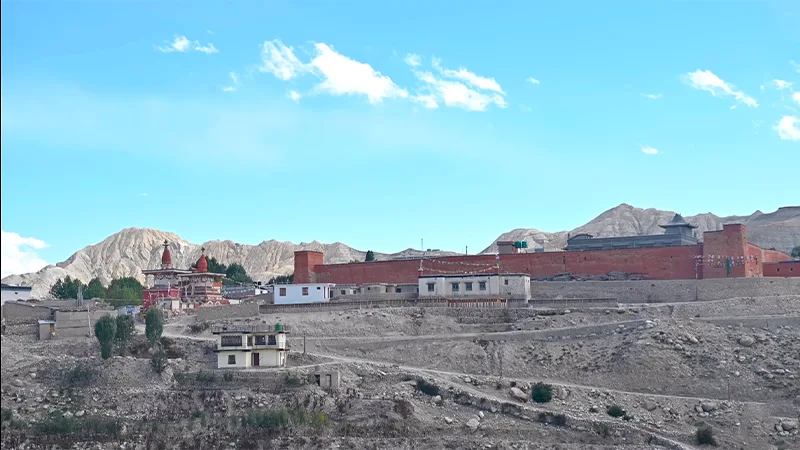Lomanthang is a hidden gem located in the remote corners of the Annapurna region of Nepal, also referred to as “Lo Manthang.” This walled city, which is 3,810 meters above sea level and encircled by massive Himalayan peaks like the Dhaulagiri and Annapurna ranges, was once the seat of the ancient Kingdom of Lo.
Lomanthang boasts a rich cultural heritage and is home to diverse ethnic groups such as the Loba and Gurung communities, each with their own unique customs and traditions.
In this blog, we will delve deeper into Lomanthang’s geography, culture, and attractions, as well as its current challenges and opportunities. We will also explore the historical significance of this fascinating city.
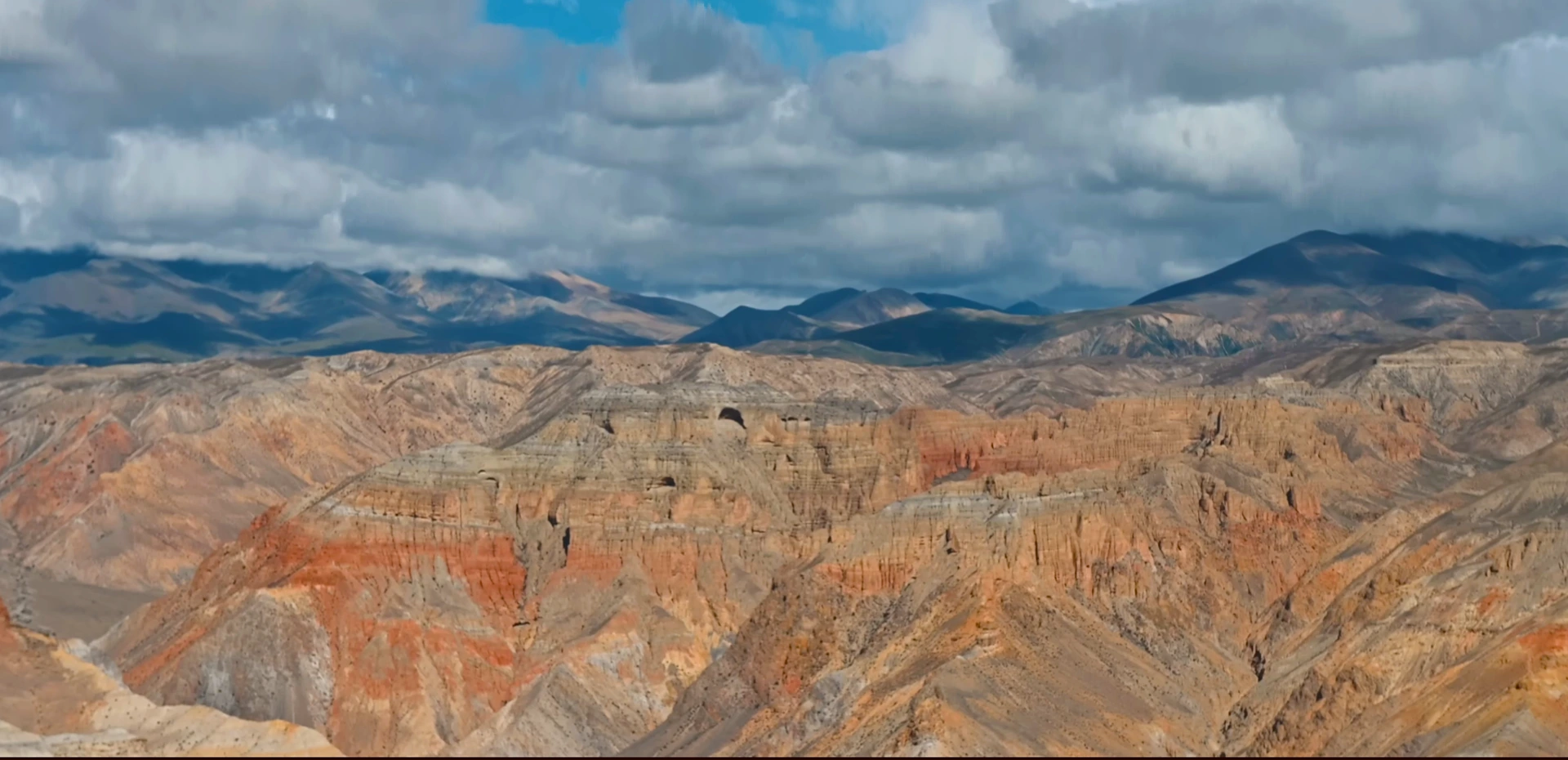
Brief History and Significance of Lomanthang
Lomanthang is a place with a long and storied past that spans more than seven centuries. At one point, it served as the capital of the Kingdom of Lo, which existed from the 14th to the 18th centuries.
This region was a key location on the Salt Route, an ancient trade route that linked Nepal and Tibet. As a result, Lomanthang became an important center for trade, religion, and culture.
The Kingdom of Lo experienced great prosperity and cultivated a distinctive culture and identity. The Loba people, who constitute the primary ethnic group in the area, have their language, customs, and traditions.
In order to protect itself from invaders, the city of Lomanthang is encircled by a tall wall. The city’s narrow alleyways and houses constructed of mud bricks lend it a distinctively medieval atmosphere.
Geography and Climate of Lomanthang
Lomanthang can be found in the Mustang region of Nepal, situated north of the Annapurna and Dhaulagiri mountain ranges. The terrain in this region is rugged and consists of deep canyons and arid landscapes, earning it the designation of a high-altitude desert.
Towering mountains, including the impressive Mt. Nilgiri, which stands at 6,000 meters (19,700 feet), surround Lomanthang, which is located at an elevation of 3,840 meters (12,600 feet) above sea level. The Kali Gandaki River, one of the world’s deepest gorges, runs through the area and provides a vital water source for the local populace.
Location and map of Lomanthang
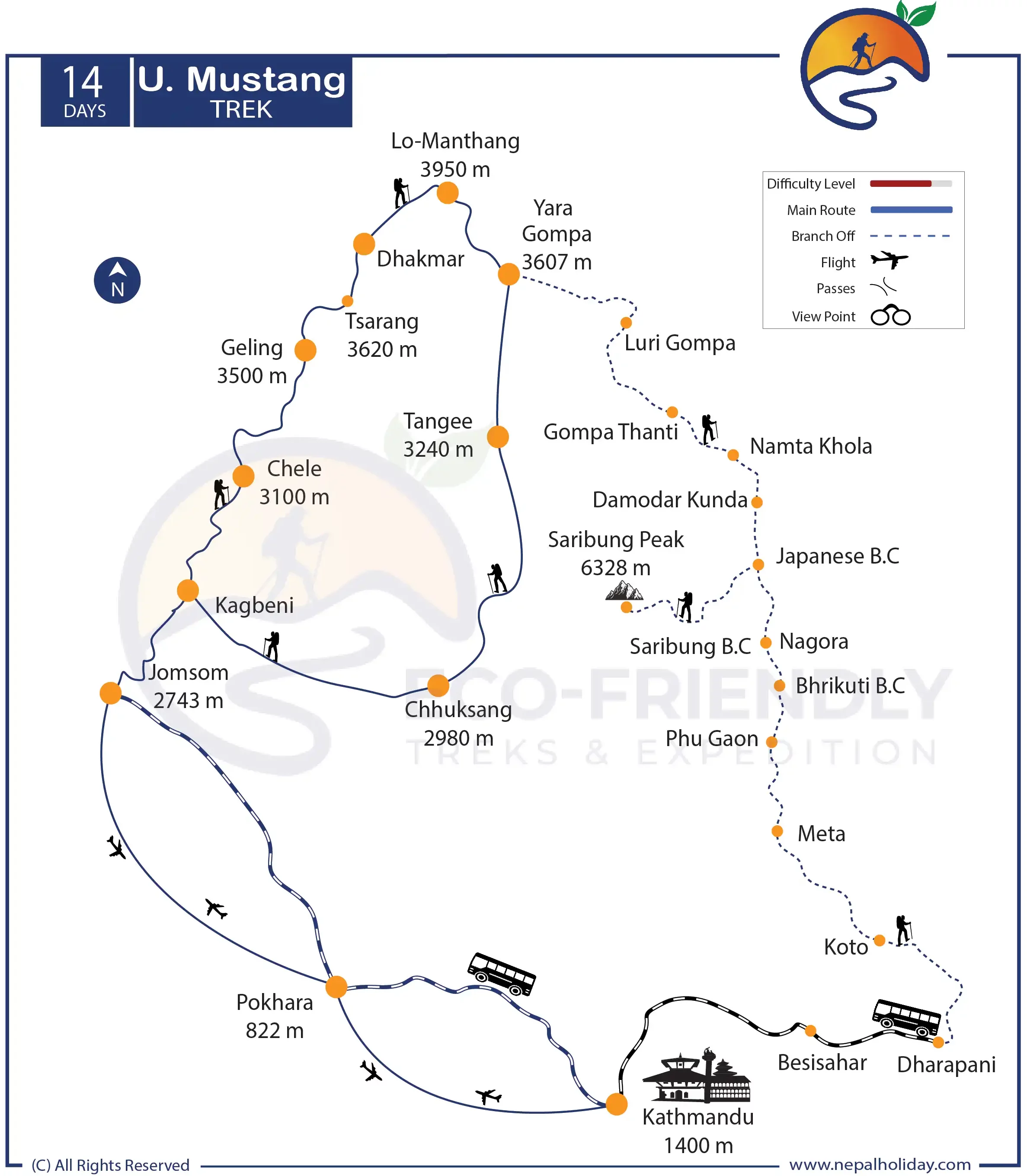
Weather and seasons in Lomanthang
Lomanthang’s climate is characterized by arid conditions and severe temperature fluctuations across four seasons. Summer temperatures can climb to 25°C (77°F) during the day but drop below zero at night. Winters are even colder, with temperatures plummeting to -20°C (-4°F) or lower.
The region is susceptible to strong winds and sandstorms due to its elevated location and dry climate. The most pleasant times to visit Lomanthang are in the spring and fall months (March to May and October to November) when the weather is mild and the skies are clear. Nevertheless, visitors should expect unpredictable weather changes and carry warm clothes and appropriate equipment for high-altitude trekking.
Culture and Lifestyle of Lomanthang
Lomanthang is home to the Loba community, a group of people with distinct customs, traditions, and languages that have been passed down through generations. The highlight of their cultural calendar is the Tiji festival, a three-day celebration that takes place in May. The festival commemorates the triumph of Dorje Jono, the incarnation of Lord Buddha, over a demon that caused drought and famine in the region. The celebration is a colorful spectacle of masked dances, music, and prayers that showcase the area’s cultural richness.
The daily life of the Loba people is centered around agriculture, animal husbandry, and trade. Barley, wheat, and buckwheat are the staple crops that sustain the region, while yaks and sheep are reared for their meat, milk, and wool. The people of Lomanthang are skilled in handicrafts like weaving and pottery, which they sell in local markets.
Religion is an integral part of the Loba culture, and the region has several monasteries and spiritual sites. Jhong Cave Monastery, the oldest in Mustang, is among the most notable. The Loba people practice a form of Tibetan Buddhism that blends with shamanic beliefs and practices.
Overall, the culture and lifestyle of Lomanthang are fascinating and unique, offering a glimpse into the rich history and traditions of the Mustang region.
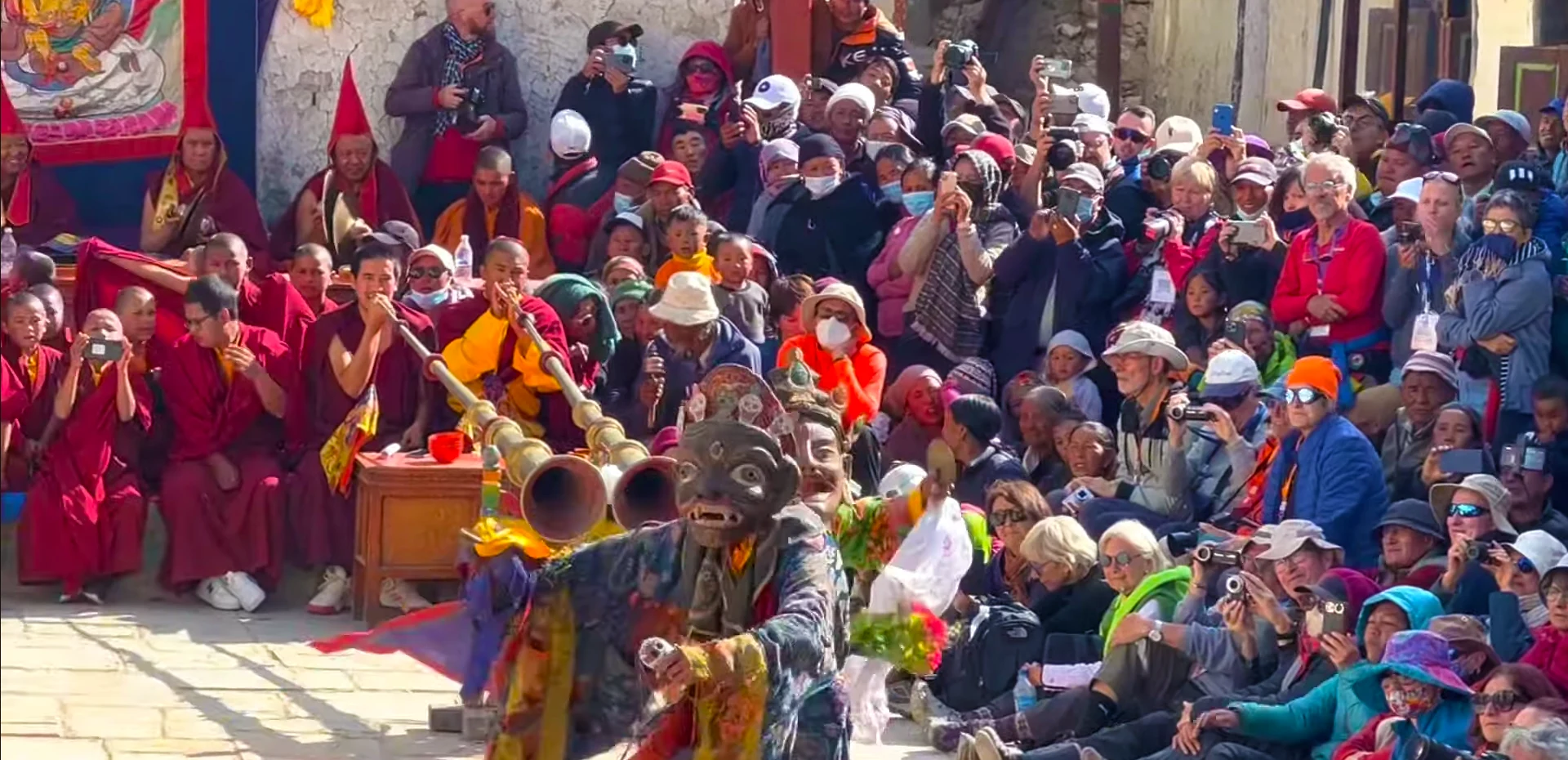
Ethnic groups and languages spoken in Lomanthang
The Lomanthang region is a place of great ethnic diversity, with several distinct groups calling it home. The Loba people are the dominant group, but there are also smaller populations of Gurungs, Thakalis, and Bhotias. These groups have lived in the area for many generations, each with its own language and unique culture.
The Loba people primarily speak the Loba language, which belongs to the Tibeto-Burman language family and is related to other languages spoken in the Himalayan region, such as Tibetan, Bhutanese, and Sherpa. In addition to Loba, many Loba people also speak Nepali and Tibetan. Nepali is the official language of Nepal and is widely spoken and understood throughout the country. Some people in Lomanthang speak Tibetan, particularly those with strong ties to Tibet. The Bhotia people, who are of Tibetan descent, have their dialect of Tibetan.
In summary, the Lomanthang region is home to a diverse range of ethnic groups, each with its language, customs, and traditions, making it a unique and fascinating place to explore.
Traditional customs, festivals, and celebrations
The Loba people of Lomanthang have a rich cultural heritage, and several traditional customs, festivals, and celebrations are observed in the region.
Lomanthang hosts an annual festival known as Tiji Festival, which is considered to be of great significance. The festival spans three days and is celebrated in May. It is a lively event, featuring mask dances, music, and prayers. The festival commemorates the victory of Dorje Jono, a reincarnation of Lord Buddha, over a demon who caused drought and famine in the region. The Tiji Festival is a wonderful showcase of the rich cultural heritage of the area and draws tourists from across the globe.
In Lomanthang, there is a significant occasion called the Yartung festival, which is observed in August. This festival spans three days and is marked by a series of cultural activities, including horse racing, archery contests, and other traditional games. The celebration is a commemoration of the region’s nomadic legacy, providing an opportunity for individuals to reunite and honor their cultural roots.
Apart from the aforementioned festivals, Lomanthang has a rich tradition of observing various customary celebrations. One such celebration is the Losar Festival, which marks the Tibetan New Year and is typically observed in February or March. During this festival, families come together to enjoy traditional cuisine, perform religious rituals, and exchange gifts, all while rejoicing in each other’s company.
Weddings are also an important celebration in Lomanthang and involve several days of festivities and rituals. The groom’s family will often visit the bride’s family and offer gifts and traditional food, and the wedding ceremony itself involves several traditional customs and rituals.
The traditional clothing of the Loba people is unique and reflects their cultural identity. Men wear a knee-length robe called a kute, which is made of wool and is tied at the waist with a sash. Women wear a dress called a ghalek, which is also made of wool and decorated with colorful embroidery.
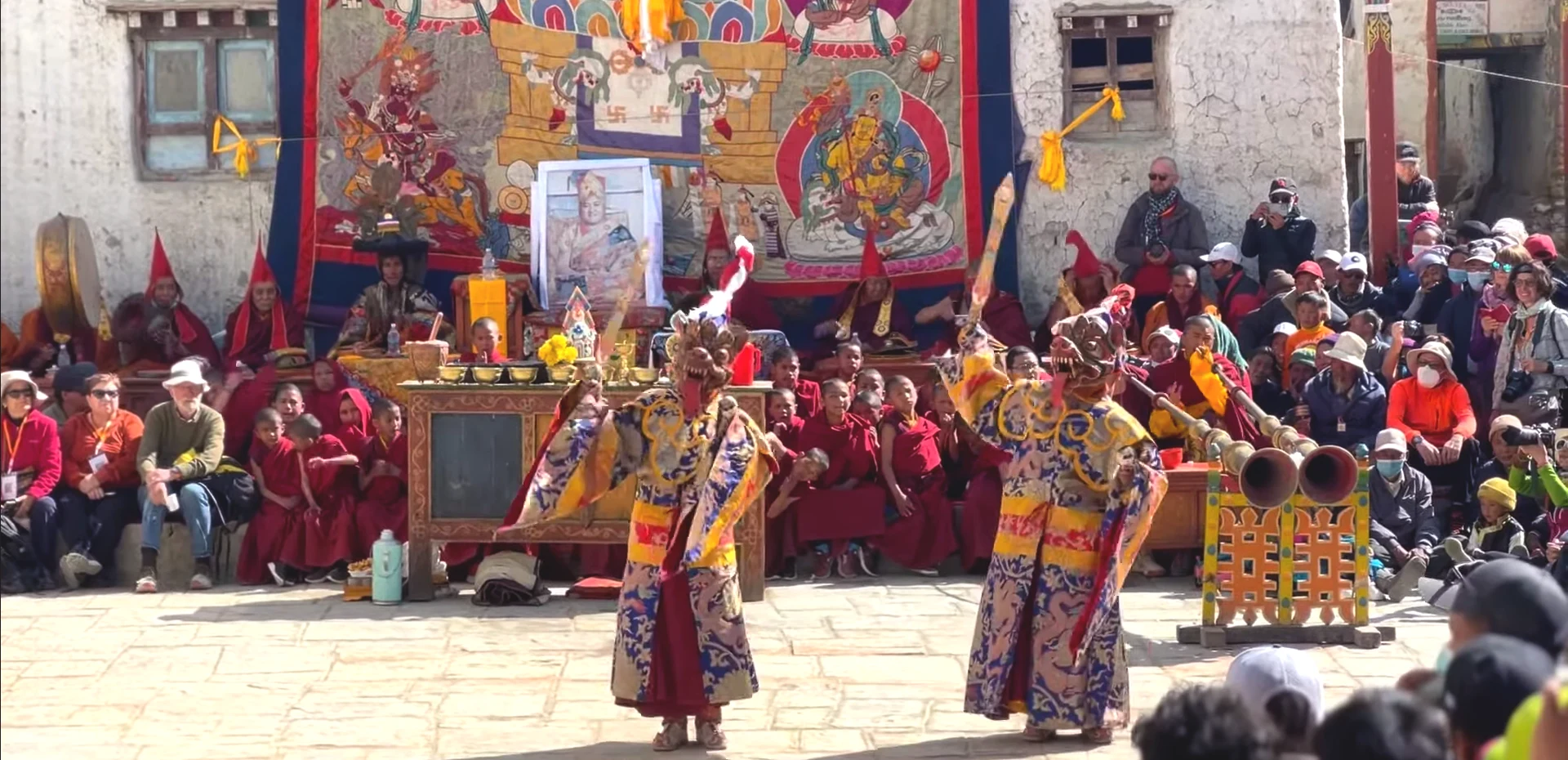
The daily life of the people in Lomanthang
The people of Lomanthang lead a lifestyle that is intricately linked with their surroundings—the geography, climate, and cultural practices of the region. Agriculture, animal husbandry, and trade are the primary sources of income for the Loba community, which serves as the backbone of the region’s economy.
The everyday routine of the people in Lomanthang reflects a strong connection with the land and an adherence to traditional practices and customs. The distinct geography, climate, and cultural legacy of the region have molded the way of life of the Loba people, contributing to the preservation of their rich cultural heritage that is still being followed in the area to this day.
Cuisine and Food Culture
The food in Lomanthang is influenced by the area’s geography, weather, and cultural traditions. Locally grown crops and animal products make up the bulk of the diet and are essential for providing the necessary nutrients and energy to survive the high altitude and cold climate of the region.
Barley, grown in terraced fields throughout the region, is a staple food in Lomanthang. It is used in a variety of dishes, such as tsampa, which is roasted barley flour mixed with butter tea for a filling and hearty meal. Thukpa, a soup made with barley noodles, and tsak sha, a stew made with barley, khapsey, yak meat, and vegetables, are also popular dishes.
Meat is an important part of Lomanthang’s cuisine, with yak and sheep being the primary sources of protein. Meat is typically boiled, stewed, or roasted and seasoned with local herbs and spices. Thukpa with meat, momo (dumplings) filled with meat, and sha balep (meat pie) are popular meat dishes.
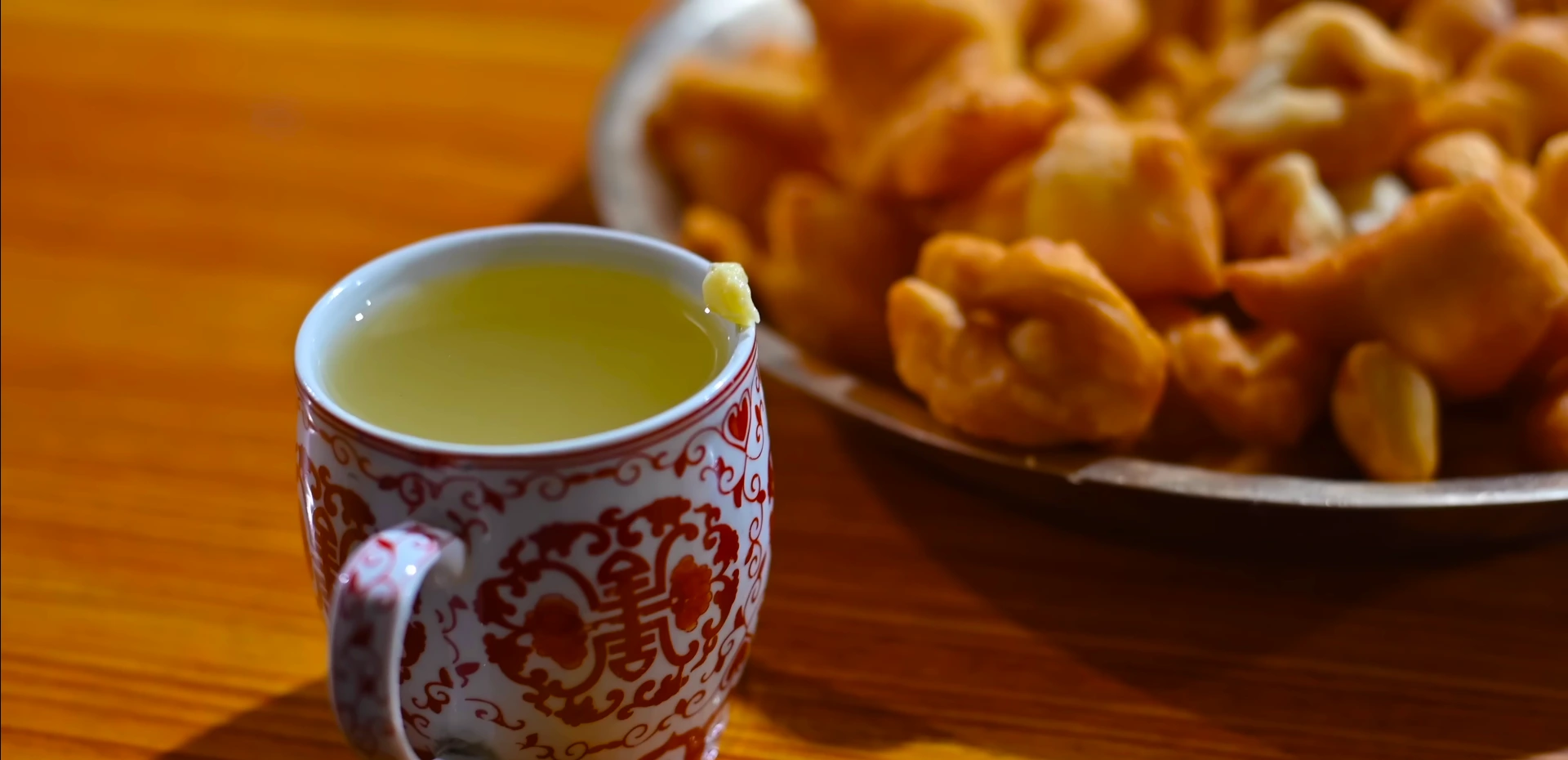
Lomanthang’s cuisine also includes a variety of vegetables and dairy products. Vegetables like potatoes, carrots, turnips, and spinach are grown in small gardens or gathered from the wild. Butter, cheese, and yogurt made from the milk of yaks and sheep are used to enhance the flavor and nutritional value of meals.
Tea, especially butter tea, is a common beverage in Lomanthang. Tea leaves are boiled and mixed with salt and butter to make butter tea, then churned until it becomes a frothy and creamy beverage. Butter tea is a rich and satisfying drink that provides warmth and energy in the cold climate of the region.
In summary, the cuisine of Lomanthang is straightforward, filling, and designed to sustain the body in the high altitude and cold climate of the region. Using locally grown crops and animal products, traditional cooking methods, and spices gives Lomanthang’s cuisine a unique and distinctive taste.
5 Most Visit Places in Lomanthang
Lomanthang is a region that is rich in natural beauty, cultural heritage, and historical significance. There are several attractions and places to visit in Lomanthang that are worth exploring, including:
Lomanthang Palace
Lomanthang Palace is a historically significant building located within the fortified city of Lomanthang, in Nepal’s Upper Mustang region. It is believed to have been constructed during the 14th century and was once the residence of the Mustang king.
The palace features an impressive example of traditional Tibetan architecture, with detailed wood carvings, ornate decorations, and painted murals. The palace has numerous courtyards and a high wall surrounding it to shield it from the strong winds and sandstorms that frequently occur in the area.
Unfortunately, the palace was abandoned in the 18th century and slowly fell into disrepair over time. To preserve the building and restore it to its former glory, the Nepalese government initiated a restoration project in 2007. The restoration efforts were completed in 2010, and visitors are now welcome to explore the palace’s rich cultural and historical significance.
Chhoser Cave
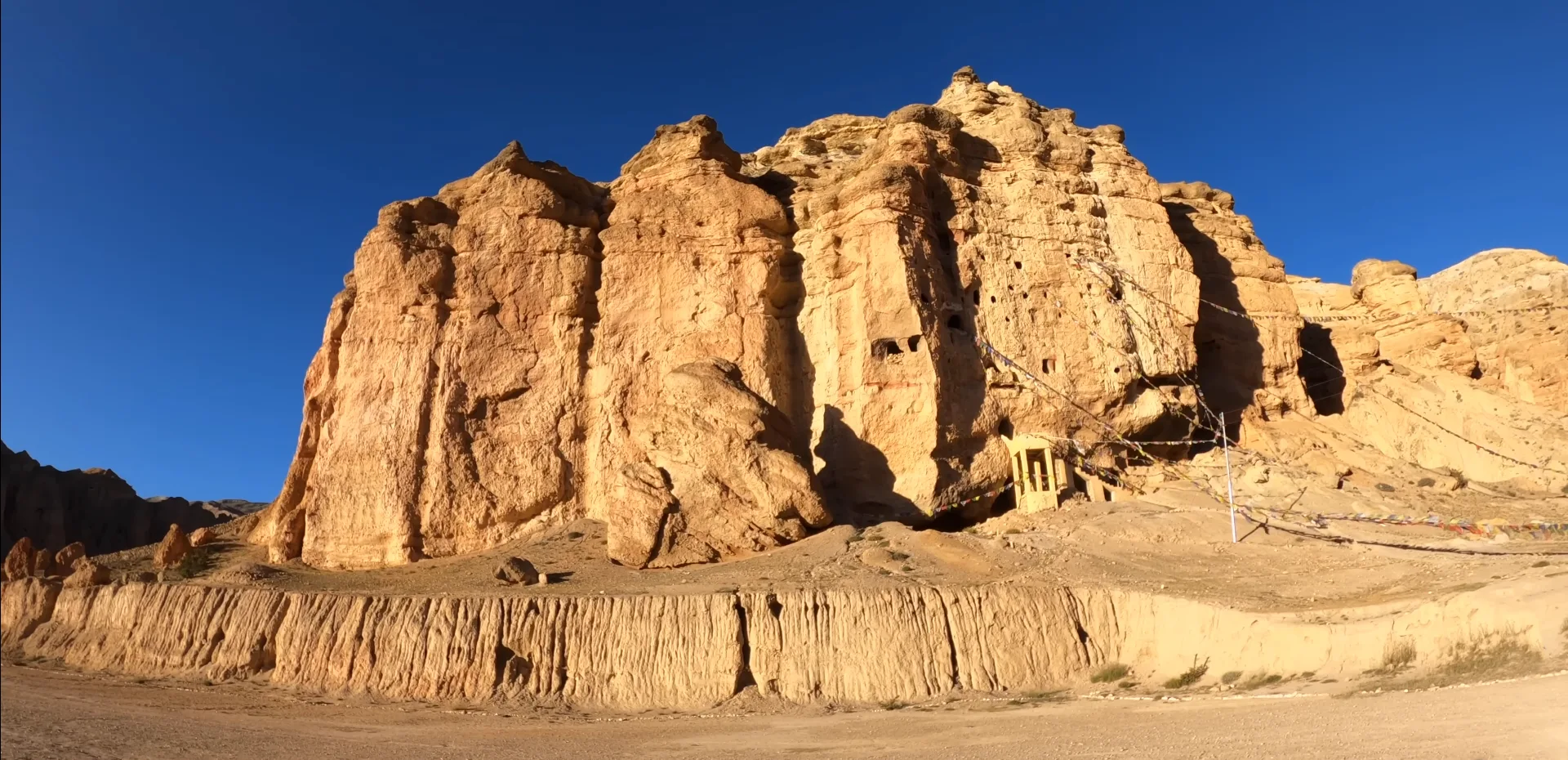
Chhoser Cave is a historical cave system located near the village of Chhoser in the Upper Mustang area of Nepal. Buddhist monks used it for retreat and meditation because it has a variety of small caves, underground tunnels, and meditation chambers.
The cave walls are embellished with stunning paintings and engravings depicting Tibetan deities, scenes from Buddhist mythology, and many more. Additionally, devotees who come to the location to pray and seek spiritual guidance have decorated these caves with colorful prayer flags and gifts.
One of the most intriguing features of the Chhoser Cave complex is a natural rock formation that appears to be the head of a demon. According to local people, Padmasambhava, a great Buddhist saint, eventually subdued the demon after it had previously terrorized the area. Later, the demon’s head was converted into a meditation chamber where monks could confront their fears and conquer their inner demons.
Namgyal Gompa
Namgyal Gompa, also known as the Monastery of Victory, is a revered Buddhist monastery nestled within the walled city of Lomanthang, located in the Upper Mustang region of Nepal. Its establishment dates back to the 15th century when it was founded by the region’s ruler, Ame Pal. Over time, successive kings have made significant contributions to its expansion and renovation.
Namgyal Gompa is a highly esteemed monastery, celebrated for its stunning architecture, awe-inspiring paintings, and ancient manuscripts. It is home to a vast collection of Buddhist artifacts and relics, including prayer wheels, thangkas (painted scrolls), and statues.
One of its most remarkable features is the three-story assembly hall, adorned with magnificent murals and paintings that portray scenes from Buddhist mythology. The hall also houses a large Buddha statue and several smaller statues of Buddhist deities.
Thubchen Gompa
Thubchen Gompa, also known as Thubchen Monastery, is a Buddhist monastery located in the walled city of Lomanthang in Nepal’s Upper Mustang region. It is a 15th-century edifice and is regarded as a significant and sizable monastery in the area.
Thubchen Gompa is renowned for its impressive architecture, exquisite paintings, and ancient manuscripts. The monastery houses an extensive array of Buddhist artifacts and relics, including statues, painted scrolls called thangkas, and prayer wheels.
The main assembly hall of the monastery is adorned with stunning murals and paintings depicting various scenes from Buddhist mythology. The hall is home to a large Buddha statue and several smaller statues of Buddhist deities.
One of the monastery’s most distinctive features is its 14th-century prayer wheel, believed to be the world’s oldest and largest. The wheel, made of copper and adorned with intricate designs and symbols, is a sight to behold.
Ghami Village
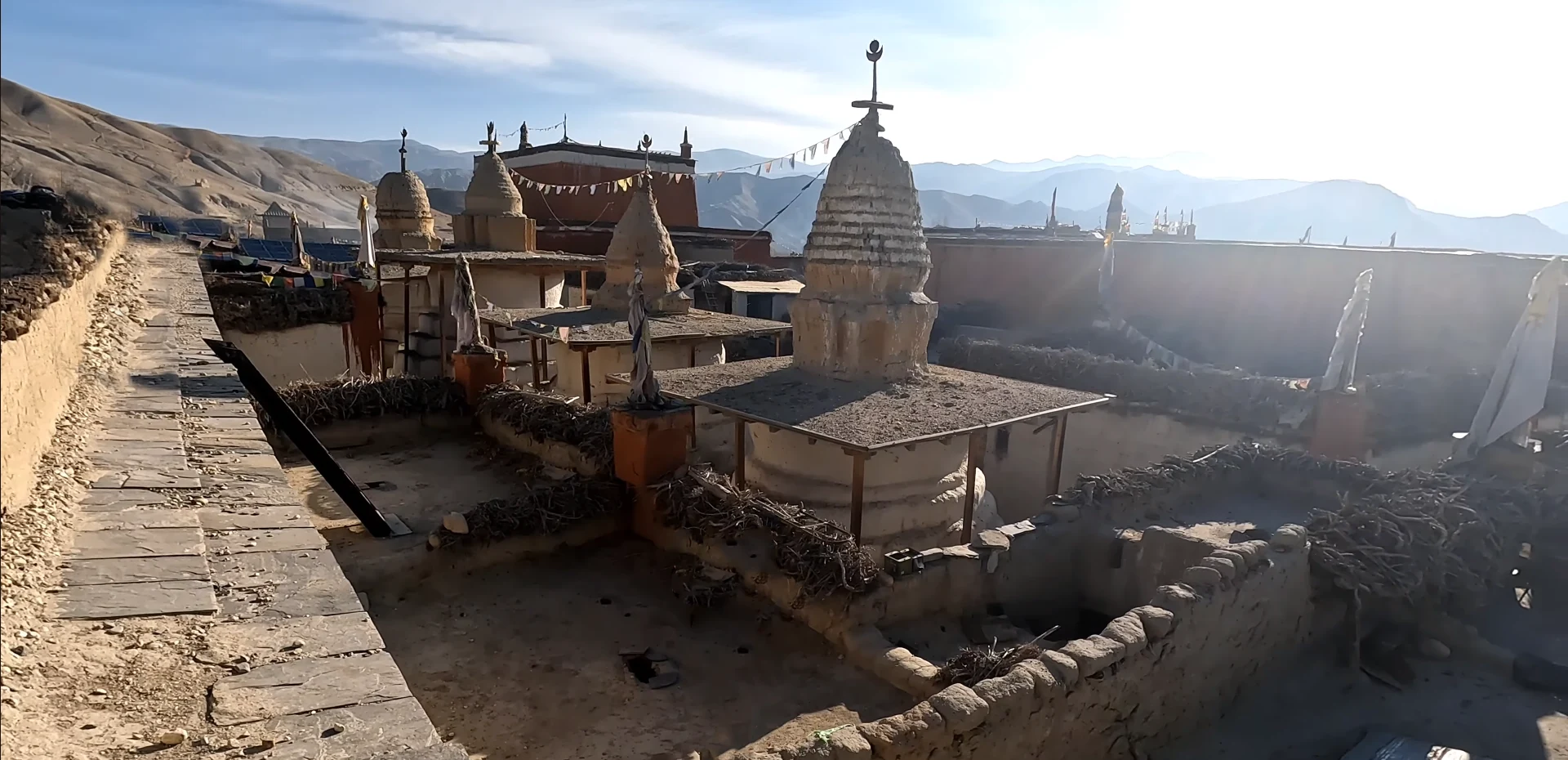
Ghami is a village that is well-known for its traditional mud-brick houses, winding narrow alleys, and ancient monasteries. It has a rich history and cultural heritage that can be traced back several centuries, and the village is home to a small yet thriving community of locals who continue to uphold traditional ways of living.
The main attraction in Ghami is the Ghami Monastery, which is also called Ghar Gompa. This monastery was constructed during the 15th century and is considered one of the Upper Mustang region’s oldest and most significant monasteries. It is adorned with stunning paintings, murals, and statues, making it a favorite spot for both tourists and pilgrims alike.
At Last,
Lomanthang is a captivating destination that provides a window into the rich cultural and natural heritage of Nepal’s Upper Mustang region. A vibrant local community has kept its traditions and practices for generations of lives in the area.
The grand Lomanthang Palace and Namgyal Gompa, along with the picturesque landscapes of the Kali Gandaki River and the rugged terrain of the Upper Mustang region, offer a plethora of attractions for visitors. Tourists can delve into the ancient monasteries, taste the local cuisine, and immerse themselves in the distinctive customs and traditions of the locals.
Lomanthang is a must-visit for anyone interested in history, culture, or nature. Its aesthetic appeal, quaintness, and cultural relevance make it an unforgettable experience that will stay with travelers for a lifetime.


